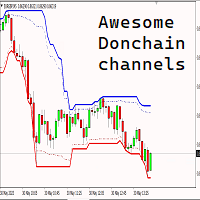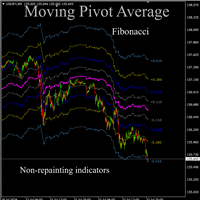CCI Phases Indicator
- インディケータ
- Ihab Mohamed Kamal Fouda
- バージョン: 1.0
- アクティベーション: 5
Introduction
The Commodity Channel Index, commonly known as the CCI, is a versatile indicator used by traders and investors to identify cyclical trends in commodities, stocks, and other securities. It was developed by Donald Lambert in 1980, primarily for commodity trading, but has since found widespread application in various financial markets. The CCI is particularly favored for its ability to gauge overbought and oversold levels in price movements.
Historical Background
Donald Lambert, the creator of the CCI, introduced this tool in the October 1980 issue of Commodities Magazine (now Futures Magazine). His primary objective was to develop an indicator that could identify cyclical turns in commodities prices. However, its adaptability has enabled its use across a range of markets, including stocks, forex, and indices.
How the CCI Works
The CCI measures the difference between a security's current price and its average price over a specified period. The most common period used is 20 days, but this can be adjusted for shorter or longer time frames depending on the trader’s strategy. The formula for the CCI calculates the mean deviation from the average price, which is then normalized by multiplying with a constant. The resulting value oscillates around zero, with +100 and -100 typically serving as boundary markers for overbought and oversold conditions, respectively.
Uses in Trading
Traders use the CCI in several ways. Primarily, it’s used to spot new trends or warn of extreme conditions. When the CCI crosses above +100, it indicates a strong uptrend, suggesting a buy signal. Conversely, a move below -100 signals a strong downtrend, indicating a potential sell signal.
Additionally, traders look for divergences between the CCI and the actual price movement as potential reversal signals. For example, if a stock's price hits a new high but the CCI forms a lower high, it may suggest weakening momentum.
Strengths
The main strength of the CCI is its flexibility. It’s applicable in different markets and time frames, making it a favorite among various types of traders. It’s also easy to interpret, providing clear signals for overbought and oversold conditions.






























































